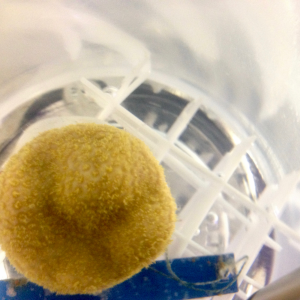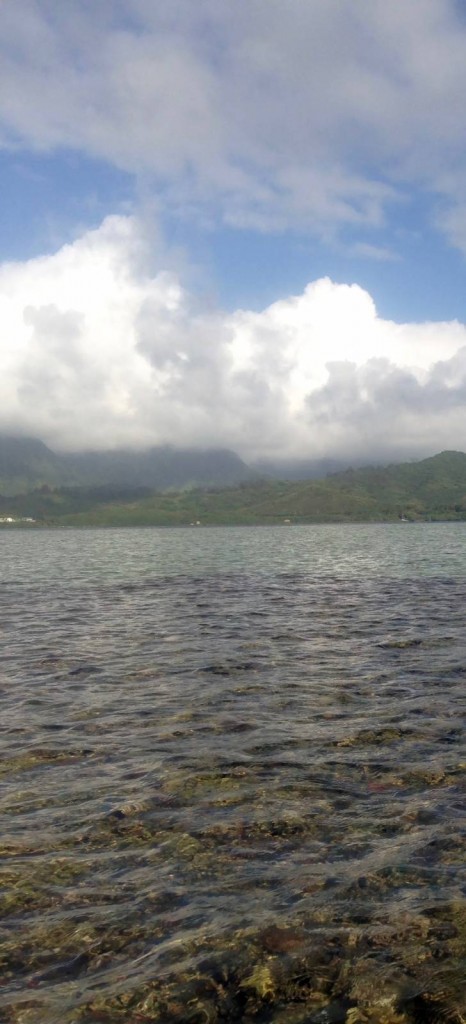2015 shattered temperature records worldwide. This year’s El Niño has been making headlines in the coral reef community since early this summer, as record-high temperatures hit coral reefs more severely than scientists have ever seen before. Yet even knowing these facts, I was not prepared for the devastation I saw at home in Hawaii over winter break.

The population of Pocillopora meandrina, the cauliflower coral that once dotted the coastline of Kailua-Kona, my hometown, has been decimated. The reef is left with the feel of an evacuated city: the coral heads are like abandoned buildings, their skeletons lifeless and vacant. Lacking the organisms that sustained them, they slowly begin to crumble.
When coral is stressed by high temperatures, their zooxanthellae, the tiny algae that make their home within the coral, evacuate. The coral is left alive, but essentially starving without the photosynthetic food the algae normally provides. Without pigmentation from the algae, the coral turns a stark white, in what is called coral bleaching. Like most animals, coral can go hungry for a little while and subsequently recover — if temperatures drop in time. But if the ocean stays too hot for too long, the coral starves to death.
I first noticed the bleaching when I returned to Hawaii in June. Hawaii’s ocean surface temperatures usually peak in August and September. If the reef was already bleaching in June, a lab-mate explained, things were looking bad.

Returning home to Kona in December, I found the reef almost unrecognizable. Many coral skeletons were covered in a thin layer of green-brown algae – not the coral’s old symbiotic residents, but encroaching turf algae. This is a sure sign that the coral organism is dead, the empty building overrun by squatters.
Yet I was surprised by the contrast between this decimation and the abundance of life that remains on the reef. I watched black-striped Convict Tang swim industriously to and fro, flashing the dark colors that are the garb of spawning season. A Gold Lace Nudibranch inched across a rock. And within the crevasses of a dead cauliflower coral, a host of tiny crabs still made their home – at least for now, while the coral skeleton remains.

The corals themselves are not entirely devastated. Porites corals, which build smooth, rounded colonies, have survived relatively well. Coral also fared much better in cooler, deeper waters, and these survivors may produce larvae to help reseed shallower reefs. And in the shallow water, a few individuals of each species managed to survive. These individuals, for reasons that biologists are only beginning to understand, are better adapted to tolerate high temperatures. They may later confer this tolerance to their offspring, shaping a natural process of adaptation and evolution that will adjust the reef to a warmer future.
But real recovery is still hard to imagine. In shallow waters, where cauliflower coral is dominant, most colonies are dead. It took thirty years for these colonies to gradually accrete their carbonate skeletons, and it will take another thirty for them to recover. And that’s the best-case scenario. This El Niño is expected to extend into the coming summer, becoming even more extreme. If global temperatures continue to rise, these reefs may not be able adapt in time.
This loss is a tragedy for all of us. I fell in love with ecology on Kona’s reefs, and through my studies and research am beginning to comprehend all that coral reefs stand for: biodiversity, mystery, a tapestry of vulnerability and resilience. Coral reefs are harbingers of the tragedies unfolding in ecosystems around the globe. There is inherent value to the beautiful, breathtaking complexity these tiny organisms create on Earth, and we are losing them with staggering speed.
Yet this kind of tragedy demands that we respond with passion and urgency, not despair. Watching Convict Tang amass in mating season’s ball-gown black, I cannot possibly lose hope. I instead find myself more driven to take part in the collective search for solutions. And we can all be more inspired in our efforts to understand the earth, and to be better caretakers of our only home. Like any death, it is a potent reminder of the value, beauty, and majesty of life.
– Zoe Sims, Natural Sciences Correspondent

